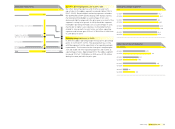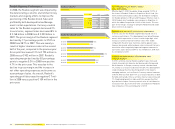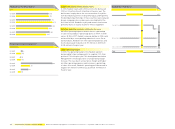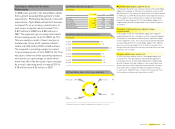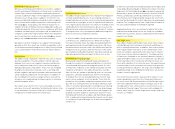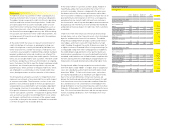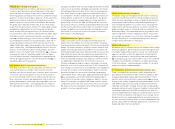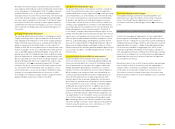Reebok 2008 Annual Report Download - page 113
Download and view the complete annual report
Please find page 113 of the 2008 Reebok annual report below. You can navigate through the pages in the report by either clicking on the pages listed below, or by using the keyword search tool below to find specific information within the annual report.
adidas Group Annual Report 2008 109
Corporate risk overview
Probability
of occurrence
Potential
fi nancial
impact
External and industry risks
Macroeconomic risks High High
Consumer demand risks Medium Medium
Industry consolidation risks High Medium
Political and regulatory risks Low Medium
Legal risks Low Medium
Risk from product counterfeiting and imitation High Low
Social and environmental risks Low Low
Natural risks Low Low
Strategic & operational risks
Portfolio integration risks Low Low
Risks from loss of brand image Medium Medium
Own-retail risks Medium Medium
Risks from rising input costs Medium Medium
Supplier default risks Low Low
Product quality risks Low Low
Customer risks Medium Medium
Risk from loss of key promotion partnerships Medium Low
Product design and development risks Low High
Personnel risks Low Medium
Risks from non-compliance Low Medium
IT risks Low High
Financial risks
Credit risks Medium Medium
Financing and liquidity risks Low High
Currency risks Medium Medium
Interest rate risks Low Low
External and Industry Risks
Macroeconomic risks
Growth of the sporting goods industry is infl uenced by con-
sumer confi dence and consumer spending. Abrupt economic
downturns, in particular in regions where the Group is highly
represented, therefore pose a signifi cant short-term risk to
sales development. To mitigate this risk, the Group strives
to balance sales across key global regions and also between
developed and emerging markets. In addition, a core ele-
ment of our performance positioning is the utilisation of an
extensive global event and partnership portfolio where demand
is more predictable and less sensitive to macroeconomic
infl uence.
In 2009, the Group expects global economic growth to slow
considerably. North America and Europe are expected to
remain in recession see Subsequent Events and Outlook, p. 120.
Economic expansion in emerging markets, including China,
Russia and India, is expected to continue, albeit at a more
moderate rate compared to prior years. These markets have
overtaken North America and Western Europe as the largest
contributors to Group revenue growth. As a result of the
current global macroeconomic uncertainty, we now assess the
likelihood that adverse macroeconomic events could impact
our business as high. We also now assess the potential fi nan-
cial impact of such events as high.
Consumer demand risks
Failure to anticipate and respond to changes in consumer
demand for sporting goods products is one of the most serious
threats to our industry. Consumer demand changes can be
sudden and unexpected. Because industry product procure-
ment cycles average 12 to 18 months, the Group faces a risk of
short-term revenue loss in cases where it is unable to respond
quickly to such changes. Even more critical, however, is the
risk of continuously overlooking a new consumer trend or fail-
ing to acknowledge its potential magnitude over a sustained
period of time.
To mitigate this risk, continually identifying and responding to
consumer demand shifts as early as possible is a key respon-
sibility of our brands. In this respect, we utilise extensive pri-
mary and secondary research tools as outlined in our risk and
opportunity identifi cation process.
As a leader in our industry, our core brand strategies continue
to be focused on infl uencing rather than reacting to the chang-
ing consumer environment. We invest signifi cant resources
in
research and development to innovate and bring fresh new
technologies and designs to market see Research and
Develop-
ment, p. 074. In addition, we also seek to enhance consumer
demand for our brands and brand initiatives through extensive
marketing, product and brand communication programmes.
And we continue to focus on supply chain improvements to
speed up creation-to-shelf timelines see Global Operations,
p. 064. In 2009, the adidas Group will continue to refi ne the
Reebok brand’s communication programme in alignment with
the brand’s positioning see Reebok Strategy, p. 052.
Given the broad spectrum of our Group’s product offering,
retailer feedback, visibility provided through our order back-
logs and other early indicators see Internal Group Manage-
ment System, p. 058, we view the overall risk from consumer
demand shifts as unchanged versus the prior year. Changes
in consumer demand continue to have a medium likelihood of
occurrence and could have a potential medium impact on our
Group.




